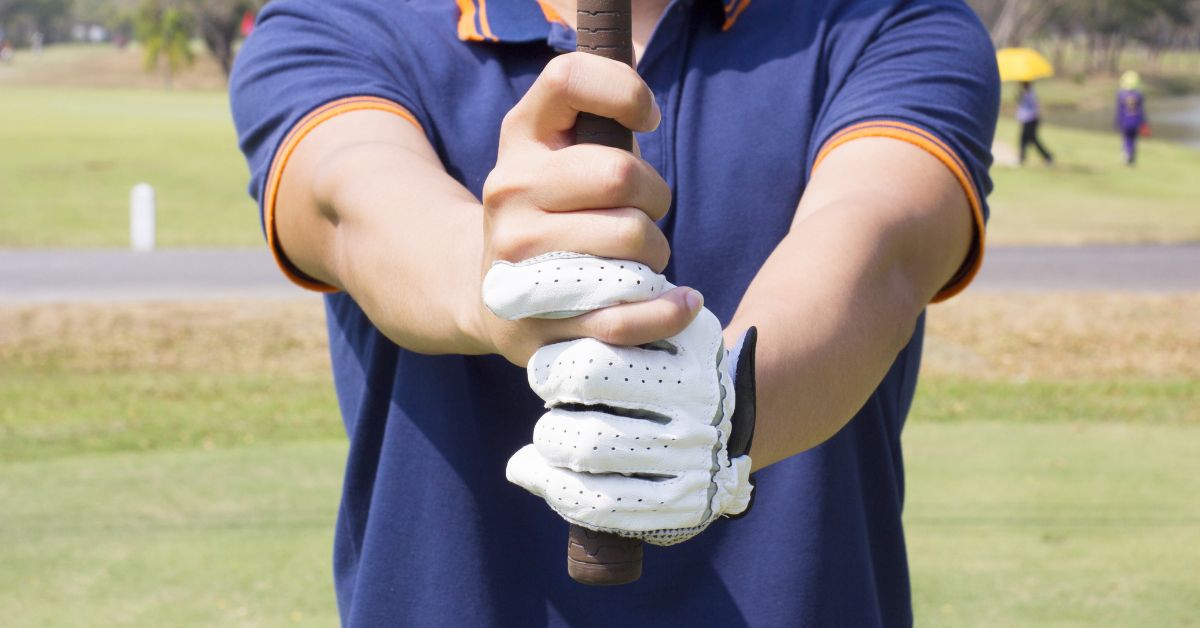It’s common for golfers to interlock their fingers to maintain a solid grip in a full golf swing.
But, should you also use an interlocking putter grip? Or are there better ways?
In this article, you’ll learn the benefits of an interlocking putter grip and the pros that are using the method. I’ll also be sharing 5 extra ways to hold the putter.
Interlocking Putter Grip
An interlocking putter grip is when the hands interlock on the grip via the pinky and index fingers. It’s often used by golfers who use the same grip for all their clubs, for simplicity. Pros such as Steve Stricker and Xander Schauffele have also used the interlocking putter grip technique.
What is an Interlocking Golf Grip?
An interlocking grip is when the hands are linked together by two interlocking fingers.
The bottom hand pinky finger interlocks with the top hand index finger, keeping the hands together for stability.
The interlocking grip is commonly taught to beginner golfers for the full golf swing, as it provides a strong grip of the club throughout the swing.
However, many golfers choose to stick with the technique as they progress – even pros like Jack Nicklaus, Tiger Woods, and Rory McIlroy use an interlocking grip.
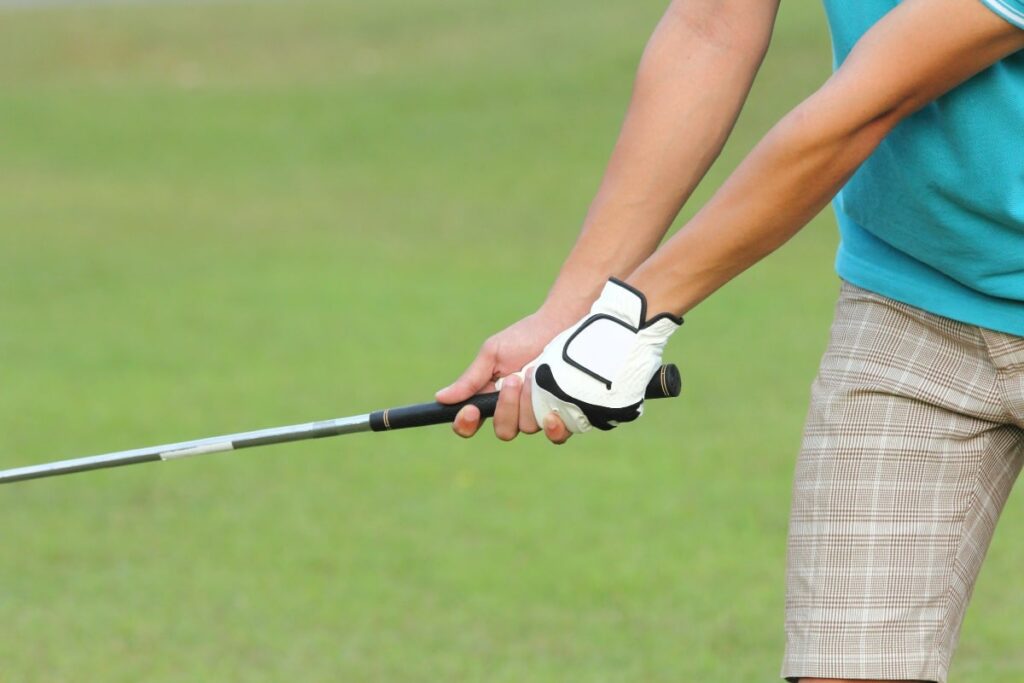
What is an Interlocking Putter Grip?
While many golfers keep their grip the same for long-hitting woods through to short-hitting wedges, the putting grip varies a lot between golfers.
However, some golfers choose to also use the same interlocking grip approach for the putter. This keeps things simple and easy to remember.
An interlocking putter grip is when the bottom hand’s little finger and the top hand’s index finger interlock when gripping the putter.
Furthermore, some golfers extend their bottom hand index finger down the side of the grip for extra stability.
Should You Use an Interlocking Putter Grip?
If you currently use an interlocking grip for the other clubs in your bag, it can be a good idea to use the same grip for your putter.
This is because it keeps things simple. Fewer grip methods to remember can allow you to focus on the important thing: getting the ball in the hole.
Ultimately, the putting grip is unique to every golfer. If the grip feels comfortable, and you’re making a consistently good stroke, then stick with it!
Which Pros Use an Interlocking Putter Grip?
Several tour players use an interlocking putter grip, including Steve Stricker and Xander Schauffele. The former has often been described as one of the best putters in the game.
With over 40 professional wins between just these two players, the interlocking putter grip method can be regarded as proven at the highest level.
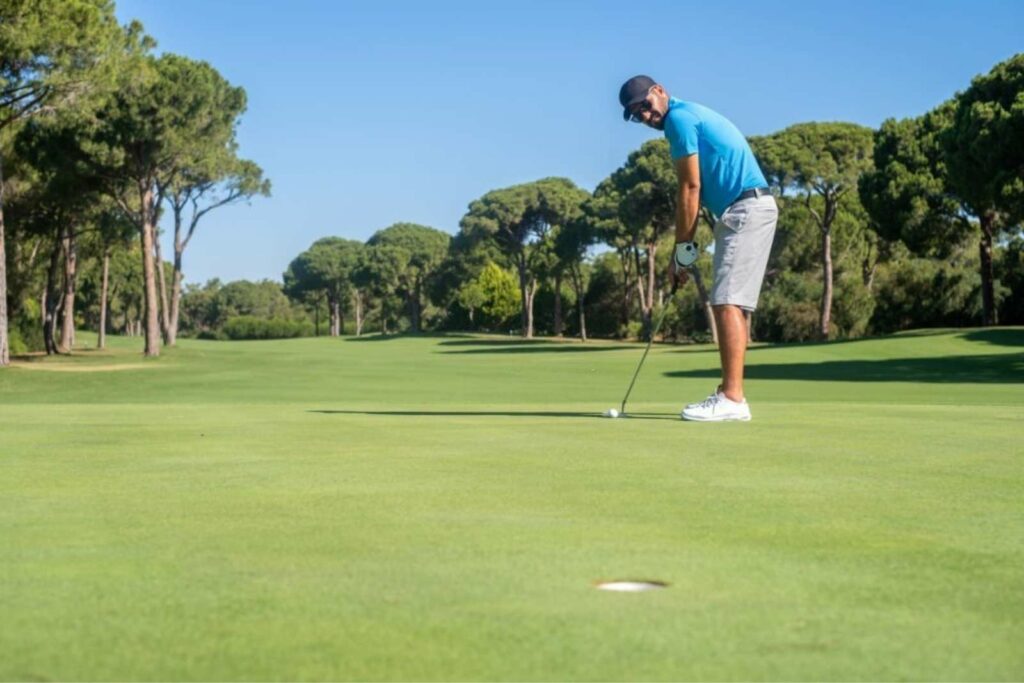
5 Other Ways to Grip the Putter
There are 5 other putting grips commonly used by golfers:
- Reverse overlap grip
- Lead hand low grip
- Claw grip
- Prayer grip
- Armlock grip
Almost every golfer on the professional tour uses one of these or the interlocking putter grip.
When combined with a solid green reading strategy, any of these grip methods will help you sink more putts. Read on to learn which one might be best for you!
1. Reverse Overlap Grip
The reverse overlap grip is a conventional putting grip that reverses the overlap grip used by many golfers for a full golf swing.
Instead of the bottom hand’s little finger overlapping the top hand’s index finger, the top hand’s index finger overlaps the bottom hand’s little finger.
Above all, the reverse overlap grip helps to prevent the hands from rolling. Also, it keeps the grip secured in each palm for increased control and feel.
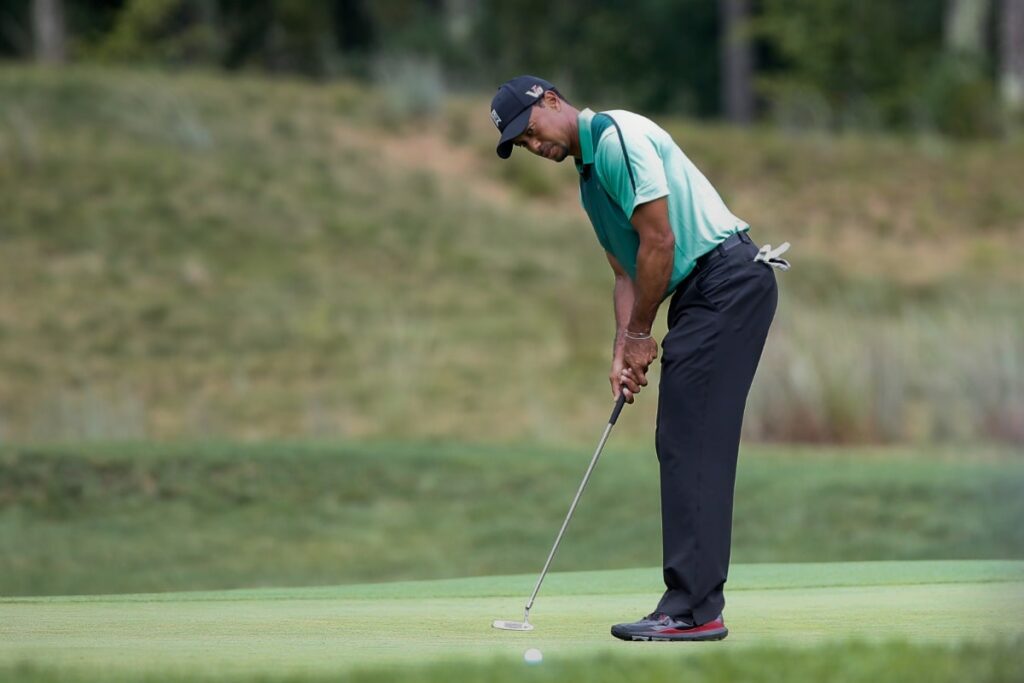
The reverse overlap grip is the most commonly used grip on the professional tour, used by players such as Tiger Woods, Jason Day, and Dustin Johnson.
Best Putter Style for Reverse Overlap Grip
The reverse overlap grip technique is best suited for players who have an arc putting stroke, with a toe hang putter.
2. Lead Hand Low Grip
The lead hand low grip is a putting grip that aims to keep the shoulders level, exaggerating a pendulum motion in the stroke.
While normally the lead hand sits at the top of the grip, in this method the hands are reversed. This gives more control to the lead hand, which reduces the amount of release.
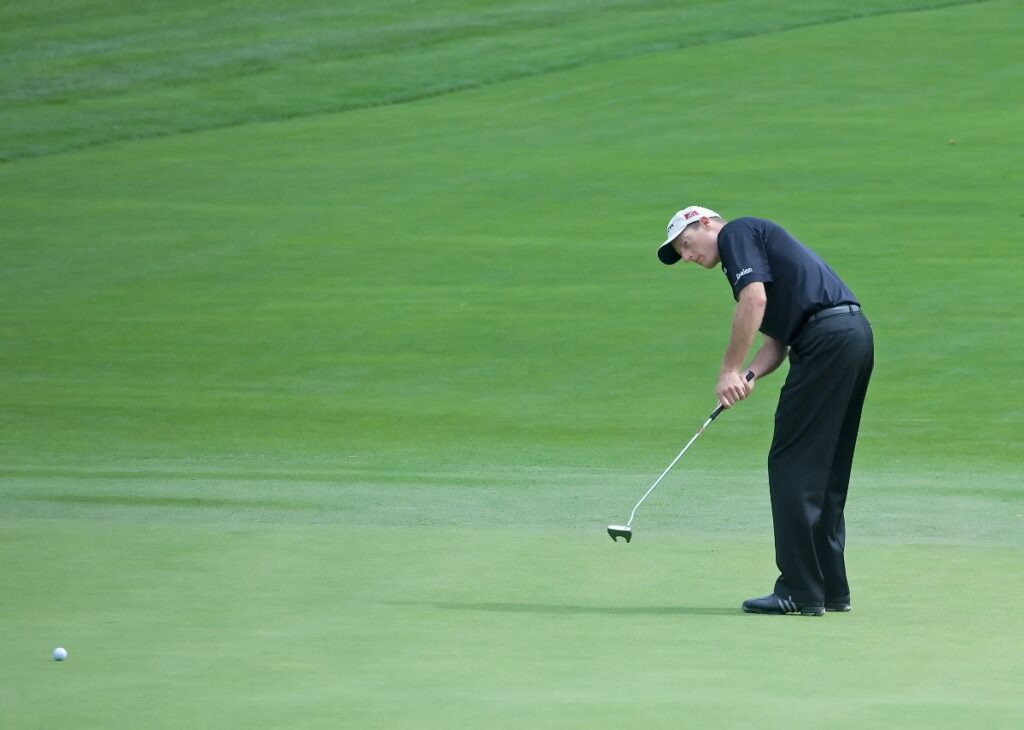
The lead hand low grip is a fairly common method in golf. It’s used by tour players such as Jim Furyk, and Padraig Harrington.
Best Putter Style for Lead Hand Low Grip
The lead hand low grip technique is best suited for players who have a straight-back and straight-through putting stroke, with a face-balanced putter.
3. Claw Grip
The claw grip, also known as the pencil grip, minimizes the bottom hand in the putting stroke to rely more on shoulders than wrists.
With the claw method, distance control is greatly improved as the use of shoulders encourages a more consistent ball strike.
The technique is best for golfers with a bottom hand that’s too dominant, causing them to pull putts left when using a more conventional putting grip.
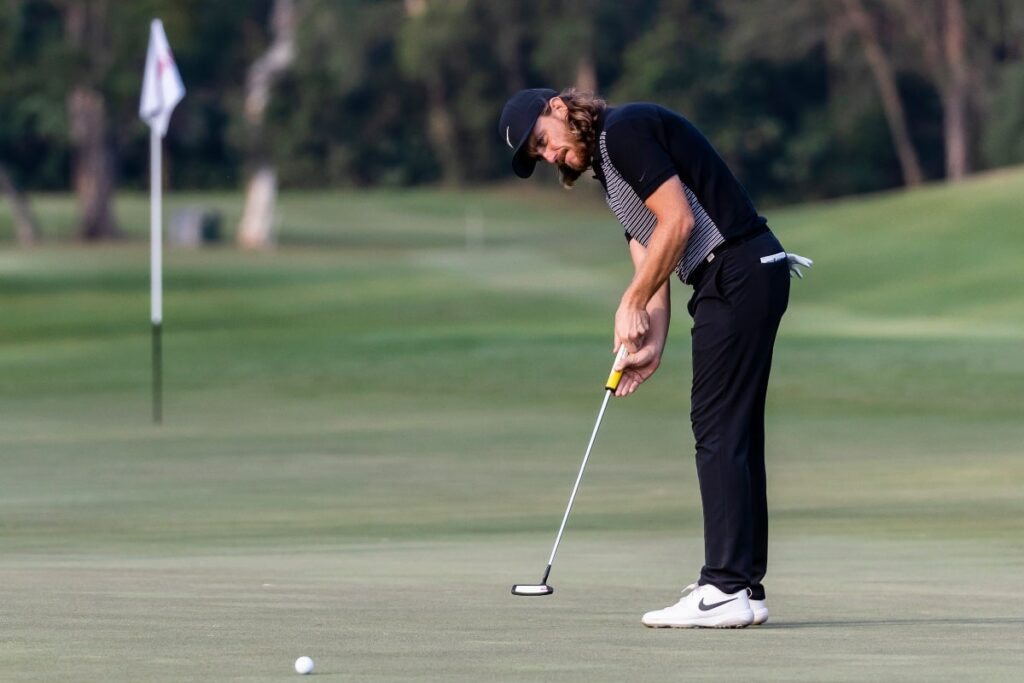
The claw grip is used by a number of pros on tour. This includes Tommy Fleetwood, Phil Mickelson, Justin Rose, and Sergio Garcia.
Best Putter Style for Claw Grip
The claw grip technique is best suited for players who have an arc putting stroke, with a toe hang putter.
4. Prayer Grip
The prayer grip, or palm-to-palm, is a unique putting method where the palms face each other on either side of the grip.
With the prayer grip, the shoulders remain level and everything stays symmetrical. The hands work as a single unit to stroke the putter in a straight line through the ball.
The prayer grip aims to minimize the use of wrists, reduce grip pressure, and improve the rhythm of your stroke.
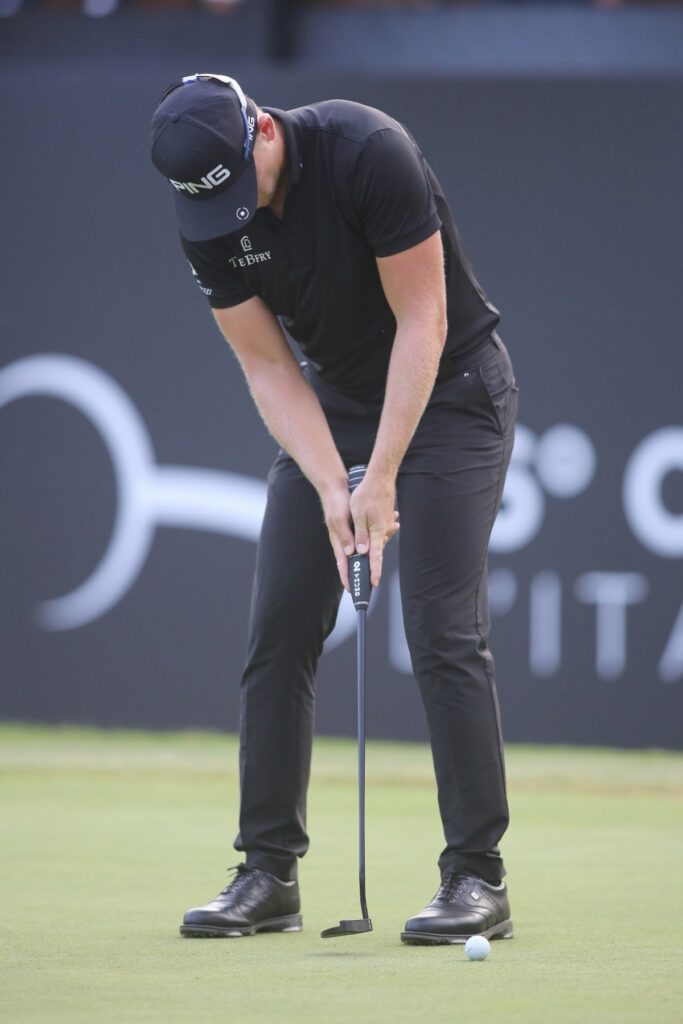
Although the prayer method is rare, it is used by players on tour. Both Henrik Stenson and Matt Wallace famously use the technique.
Best Putter Style for Prayer Grip
The prayer grip technique is best suited for players who have a straight-back and straight-through putting stroke, with a face-balanced putter. However, it can also work for an arc putting stroke with slight toe hang putters.
5. Armlock Grip
The armlock grip is another unique putting grip where the grip extends up the inside of the leading forearm, providing a stable base for the stroke.
Armlock putting is designed to completely reduce the use of hands and wrists in the stroke, instead relying solely on the shoulders to create a pendulum motion.
However, in order to use the armlock method, the putter grip must be extended to enable it to be braced against the leading arm. Most putters can be modified by removing the existing putter grip and replacing it with one designed for armlock putting.
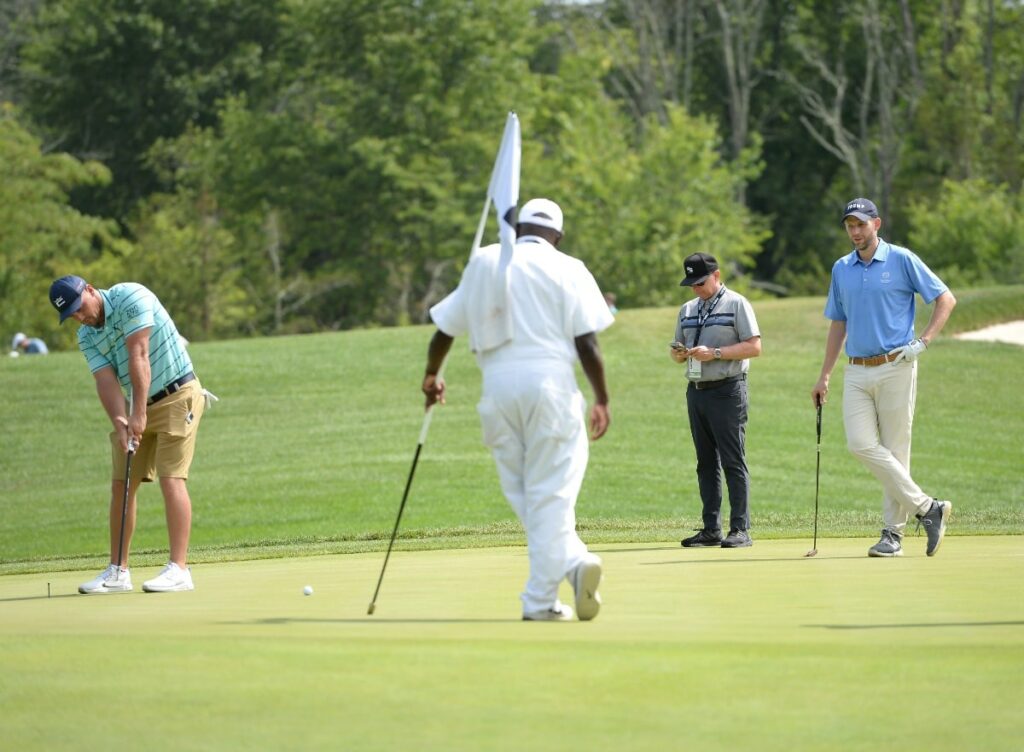
The armlock putting grip is a fairly recent discovery in golf and is used by Bryson DeChambeau, Bernhard Langer, and Bubba Watson.
Best Putter Style for Armlock Grip
The prayer grip technique is best suited for players who have a straight-back and straight-through putting stroke, with a face-balanced putter.
This video gives an excellent demonstration of each of these 5 putting grips:
Conclusion
In conclusion, an interlocking putter grip is a comfortable grip used by many players. It feels particularly natural as it’s a conventional grip used for all golf clubs.
However, the reverse overlap grip is more commonly used. This helps to keep the grip secured in the palm of the hands, increasing control and feel.
The main thing is that the face is square at impact and you can control the speed. Therefore, it doesn’t matter how you hold the putter as long as the result is good!

